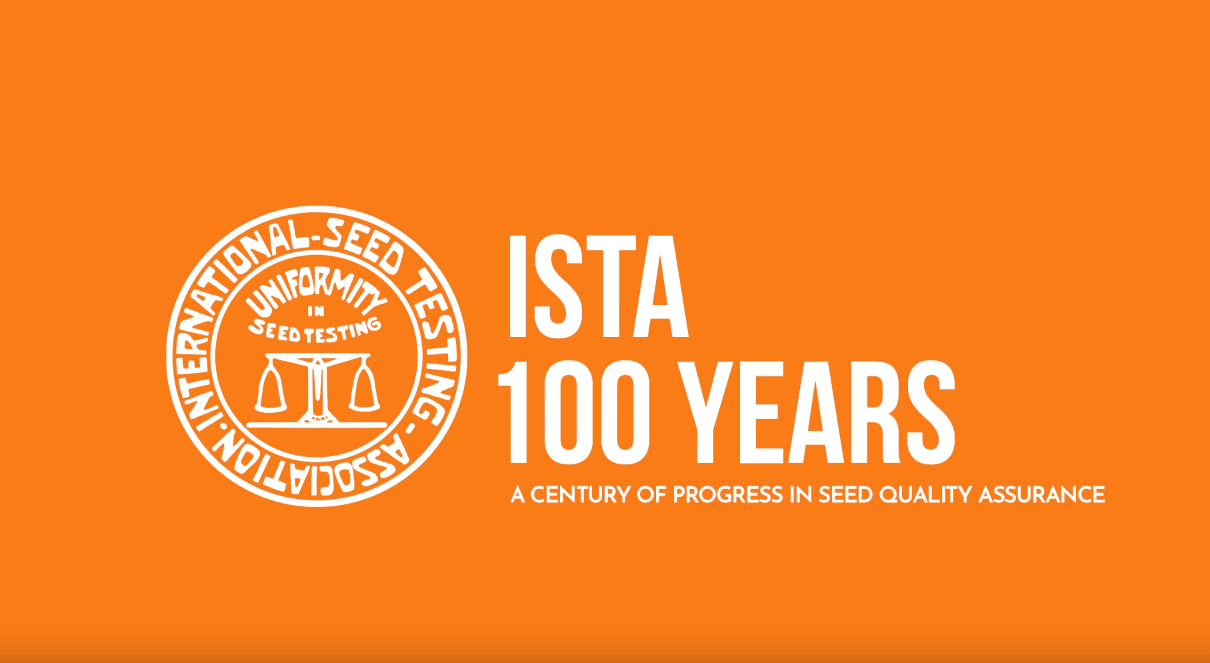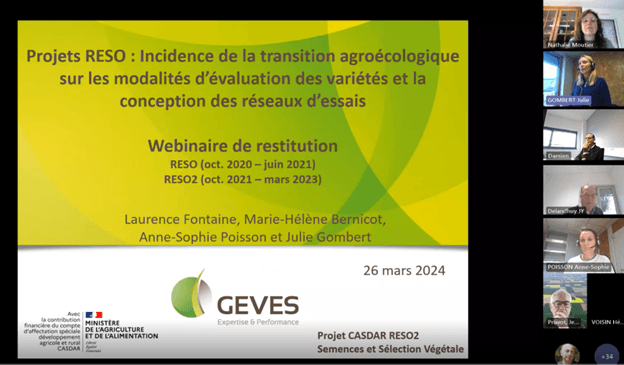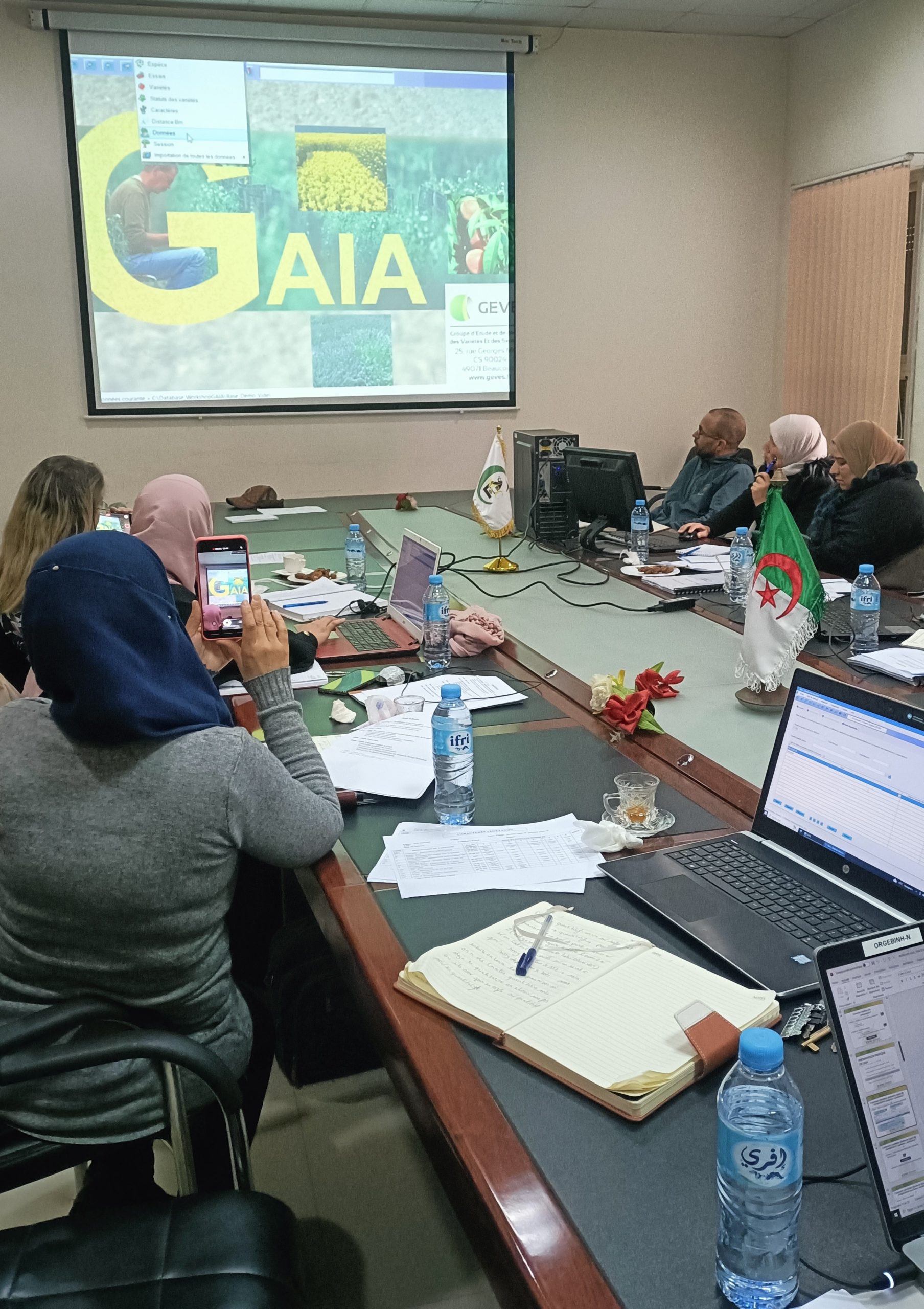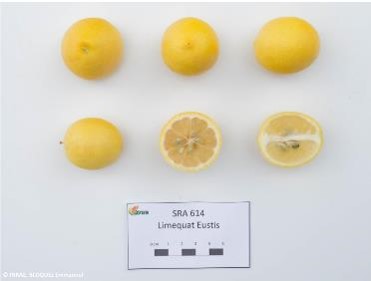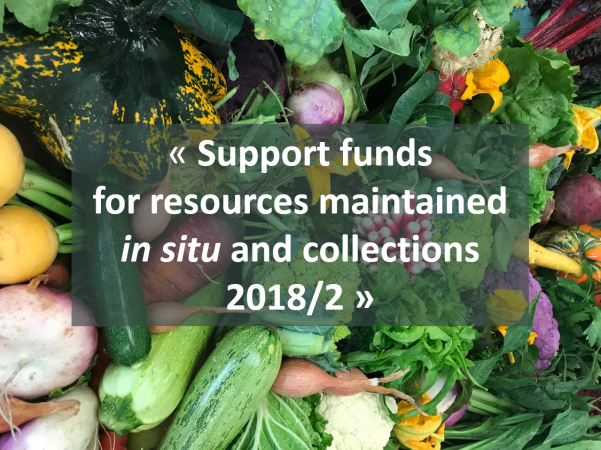
Support funds for plant genetic resources maintained in situ and collections 2018/2 – Selected projects
The call for applications for PGR maintained in situ and PGR collections was launched in September 2018. This joint call for applications is funded by the Ministry of Agriculture and Food (MAA) for an amount of 300 000 € and also by a GNIS support fund from the interprofessional seed and plant sector for an amount of 175 000 €.
16 projects are funded for an amount of 329 595 € (170 545 € financed from the MAA support fund and 159 050 € from the GNIS support fund.
4 other projects are funded because of their degree of urgency for conservation actions or for collections with either orphan or endangered species for an amount of 26 900 € (MAA : 15 325 € and GNIS : 11 575 € ; they were evaluated according to the same criteria as for the call for applications.
Actions proposed by the applicants include:
- Safeguarding of plant genetic resources, of cultivated species or wild relatives, maintained in situ or conserved ex situ in order to avoid their loss in short or medium term. Actions aimed at establishing conservation networks for ex situ collections, collecting material or maintaining wild relatives resources in situ are encouraged,
- Infrastructure or equipment financing to improve the conservation and collection management of plant genetic resources,
- Collection characterisation (phenotypic, molecular, …) in order to acquire better knowledge of plant genetic resources or to identify redundancies.
The scope of eligibility of projects and structures for this call was slightly different between the two support funds. The funds provided by the MAA were intended to finance all conservation stakeholders (except for public research institutes) whereas the interprofessional funding was open to these operators but focused on species in the GNIS field.
At the closing of the call for applications on 10 November 2018, 28 projects were received for a budget of approximately 733 926 € (Figures 1 & 2). After analysis of the projects by two experts and the examination commission, 16 projects were selected for actions to be started before 1st July 2019 and to be carried out before the end of the first quarter 2021 (Figures 3 & 4).
List of financed projects (AAC):
Wild relatives species
- Conservatoire Botanique National (CBN) de Bailleul (National Botanical Conservatory of Bailleul)
The project “Conforme” finances the purchase of a freezer to ensure the long-term ex situ conservation of plant genetic resources, including endangered wild relatives of the Hauts-de-France and Western Normandy, collected in situ. - Conservatoire Botanique National (CBN) de Brest (National Botanical Conservatory of Brest)
In order to ensure the conservation of wild relatives collected in situ and conserved ex situ at the Conservatoire Botanique National de Brest, the equipment financed through the “CollAPS Brest” project aims to improve seed drying through the acquisition of a drying oven and enable their long-term conservation through the purchase of a freezer.
Forage and grass species
- INRA Lusignan, CRB Fourragères à gazon (INRA Lusignan, Biological Resource Centre – Forage and grass)
The “COLNAT-Fourrage+” project aims to reference, document and undertake the regeneration of natural populations collected in 2014 in France as well as landraces and cultivars of perennial alfalfa which are historically major for French breeding. These resources will be used to enrich the national collection of forage and grass species. It also aims to improve the documentation and characterisation of accessions already referenced in the national collection.
Fruit species
- AFIDOL, Association française interprofessionnelle de l’Olive (AFIDOL, French Interprofessional Olive Association)
During the “RESOLVAR I” project supported in AAC 2018/1, it was found that heritage varieties of olive trees were not present in the orchards analysed in the conservation network. It is also necessary to validate the identity of the varieties preserved before their introduction into the national collection. The “RESOLVAR II” project aims to collect grafts from reference trees whose identity has been confirmed by molecular analysis and then to breed them to complete the national collection of 63 local varieties maintained on the site of the Conservatoire Botanique National Méditerranéen à Porquerolles (Mediterranean National Botanical Conservatory at Porquerolles). - Conservatoire Botanique National (CBN) du Massif Central (National Botanical Conservatory of the Massif Central)
The “CBNMC-Ribes 2” project aims to complete the conservatory’s irrigation facilities in order to ensure the sustainability of the “RIBES” collection, particularly in dealing with climate change, by partially financing the irrigation system.
Field crops species
- INRA Clermont-Ferrand, CRB Céréales à paille (INRA Clermont-Ferrand, Small grains cereals Biological Resources Centre)
Drying small grains cereals is one of the key steps for their long-term conservation. In order to improve control over this step and avoid the re-humidification of grains by storing damp grains during the drying process, a drying chamber to perform a controlled drying process (temperature and hygrometry) will be set up thanks to the financing of the “SECAR” project. - INRA Montpellier, CRB Maïs (INRA Montpelier, Maize Biological Resources Centre)
The “CoLiPopZea” project aims to secure in short term the collection by multiplying, characterising and documenting traditional populations from Guadeloupe. It also aims to secure the collection over the long term by assessing the risks of pollen contamination during multiplication. - INRA Ploudaniel, CRB BrACySol (INRA Ploudaniel, Biological Resources Centre BrACySol)
The “BraSol” project aims to improve the conservation of potato and rapeseed resources maintained at the CRB BrACySol by setting up a monitoring system for dedicated facilities. It will also improve knowledge of the national rapeseed collection through genetic characterisation.
Horticultural species
- Albano Pierre-Olivier
The project finances partially the purchase of land to allow the integration of indigenous resources from the French Guiana’s territory. It also aims to perpetuate the palm tree collection, which to date includes 560 species and almost 1000 specimens. - GAEC Barnhaven
The financing concerns the improvement of seed cleaning conditions. It also ensures a safety duplicate of the primrose collection with includes over 900 ressources in a different location than the one where the collection is maintained. - Conseil départemental du Val de Marne (Val de Marne County Council)
The Lilac collection of the Val de Marne traces the link between the species and the region. The “SYRVAL” project aims to set up various technical means to protect the collection from pests and improve the site’s equipment to limit the effects of drought events (stone, irrigation). - Mascarin, Jardin Botanique de la Réunion (Mascarin, Botanical Garden of Reunion Island)
The inventory of heritage rose resources present in situ on Reunion Island planned for in the “R-A-R-E” project is a priority axis to complete the existing collection at the Mascarin Botanical Garden. The genetic characterisation of the collection is complementary to establish its diversity and its originality.
Vegetable species
- Obs Innovation
The “Breiz Arti” project aims to build a new shelter dedicated for the conservation of the artichoke and cardoon genetic resources of the national collection which is maintained by OBS Innovation as part of the public-private cooperation network. - INRA Avignon, CRB Lég (INRA Avignon, Fruit Solanaceae Biological Resources Centre)
Through the “Sesam” project, the CRB Lég seeks to adapt existing regeneration protocols in order to secure accessions of wild relatives of fruit Solanaceae species by intervening on the various causes identified that limit the success of this process.
Multi-species
- Centre de Ressources de Botanique Appliquée (CRBA) (Applied Botany Resources Centre)
The “Conservation of domestic biodiversity in Auvergne Rhône-Alpes” project allows partial financing for the transfer of the CRBA’s ex situ collections, in particular by providing facilities dedicated to conservation in accordance with international standards financed on the interprofessional support fund. Protection of conservation areas is financed on the MAA support fund.
Vine
- Chambre d’Agriculture des Pyrénées Atlantiques (Chamber of Agriculture of the Atlantic Pyrenees)
The project concerns the renewal of the plots of land in the Tannat and Petit Courbu conservatories threatened by health issues. The project consists in harvesting healthy wood to ensure the preservation of the clonal diversity present in these collections and to implant them in a new conservatory plot.
Other projects financed by the support fund:
Horticultural
- Société Nationale d’Horticulture de France (SNHF) (French National Horticultural Society)
Following the death of the manager of the Jumaju rose collection, the Société Nationale Horticole de France (SNHF), in partnership with the Association des amis de la roseraie du Val-de-Marne and the nurseryman Mr Jérôme Chéné, launched a project to identify the unique or rare varieties of roses present in this collection. The request covers expenses for regeneration and identity validation to save the 250 varieties concerned. - Roseraie Loubert (Rose Garden Loubert)
The collection includes over 3 000 varieties of roses on 5 hectares. In order to ensure traceability and identification of resources in the long term, funding is provided for the implementation of engraved labels that will greatly limit transcription errors compared to the system currently in place. - INRA Avignon – Lactuca Collection
The funding aims to provide support for data curation of passport data and resistance to various biological pests of Lactuca genetic resources maintained at INRA prior to the retirement of the scientific officer who conducted this work. The cleaned data will be made available for the public-private cooperation network currently being created. - Conservatoire Botanique National (CBN) des Pyrénées et de Midi Pyrénées (National Botanical Conservatory of the Pyrenees and Midi-Pyrenees
In order to continue the work carried out within the frame of the GeLenHa project and to identify a backup scheme for this collection, an inventory of seed lots and associated information is necessary. On the basis of this inventory, various approaches will be explored (transfer to a European or international level, downsizing the collection to French resources).

